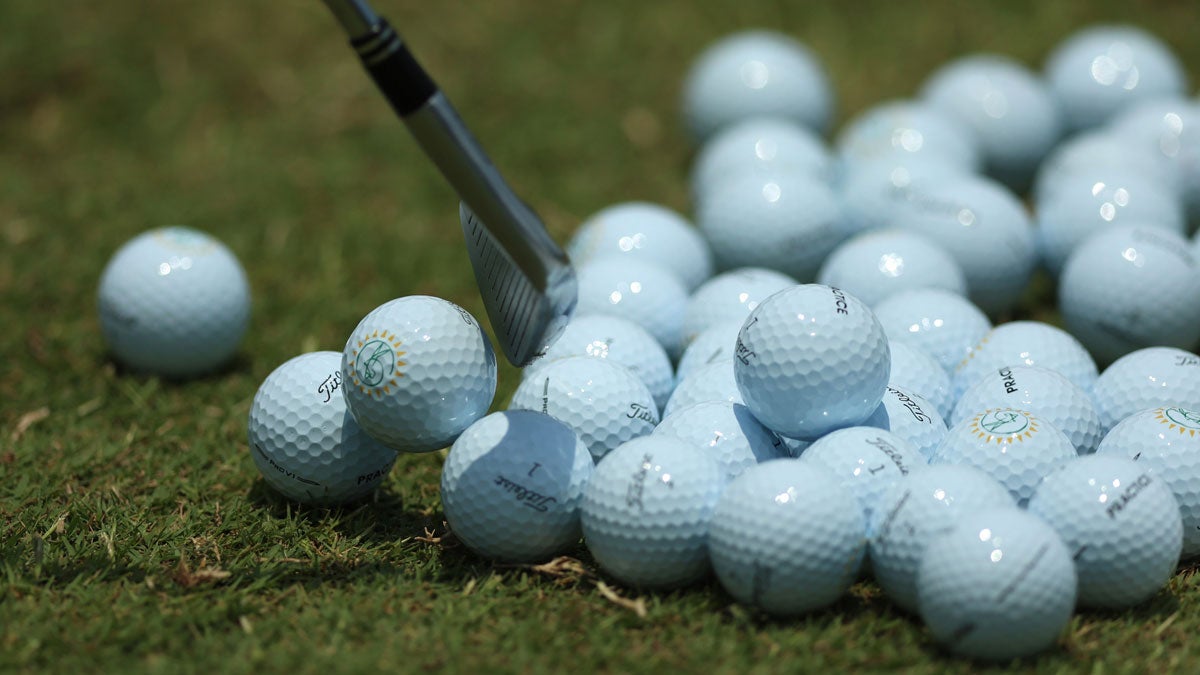The stage officially has been set for a golf-ball rollback — and it will include recreational golfers, the governing bodies announced Wednesday morning.
Following a proposal in March that saw the USGA and R&A float the idea of implementing a Model Local Rule ball for professionals and elite amateurs, the governing bodies announced a revision to the ball testing conditions, which will take effect in January 2028 for professional and January 2030 for recreational golfers.
The plan is simple: find a way to combat increased hitting distances for the “long-term stability” of the sport. For the moment, the USGA and R&A believe updated testing conditions for golf-ball conformance under the Overall Distance Standard (ODS) will help curb distance, particularly at the professional level.
Under the revised ball testing conditions, equipment manufacturers will have new offerings tested at 125 mph clubhead speed (equivalent to 183 mph ball speed) with a spin rate of 2200 RPMs and launch angle of 11 degrees. The current conditions, implemented 20 years ago, are set at 120 mph (176 mph ball speed), 2520 RPMs with a launch angle of 10 degrees.
The increase in clubhead speed is designed to keep up with a sport that continues to get faster, particularly at the highest level of pro golf where the average ball speed of the fastest 25 players was 183.4 mph in 2023. And with a new crop of golfers with elite speed waiting in the wings, the USGA believes the updated testing conditions reflect where the game is headed in the pro ranks.
“Over the years, we’ve seen launch angle go up and spin go down,” John Spitzer, the USGA’s managing director of equipment standards, told GOLF.com. “The longest players aren’t all on the Tour. Some of them are in college and some of them might be in the junior ranks at this point. These [testing conditions] are reflecting where they’re headed and we’re trying to stay ahead of that.”
The obvious question when looking at these numbers is trying to figure out where the everyday golfer fits in the universal rollback. Thomas Pagel, the USGA’s chief governance officer, confirmed the initial plan was to focus solely on elite pros and amateurs — they considered moving the test speed to 127 mph — until they started to speak with concerned “stakeholders” regarding the Model Local Rule proposal.
A dummies’ guide to the golf-ball rollback: Dates, data, reasons, FAQsBy: Sean Zak
“There were practical challenges that we heard from stakeholders,” Pagel said. “What should the collegiate game do? What should state amateurs do? What should junior amateurs do? How would PGA professionals approach this at their club if they’re asked to regulate? It caused us to step back and say, okay, the game is expressing a preference for unification. We are committed to minimizing the impact on the recreational game, and that ultimately led us to the conclusion of that 125 mph.”
Using the revised ball testing conditions, the USGA confirmed golfers at 183 mph ball speed and above should expect to see as much as 13-15 yards in driver distance loss, with the average pro and elite male golfer coming in at a reduction of 9-11 yards. As for LPGA and LET players, Pagel said the reduction would be around 5-7 yards with the driver.
And the everyday male amateur with a mid-90s clubhead speed? The change in testing speed would equate to 5 yards or less with the driver, according to the governing bodies’ research.
“This is not about taking the game back 20 years, 30 years as it relates to ball technology,” Pagel said. “Even under these rules, manufacturers will be able to produce modern golf balls that look and feel the same. We say five or less yards on your driver, that’s a big range. But that’s a big range because it’s player-dependent, it’s swing-dependent. Frankly, it’s going to be equipment dependent.
Here’s how much distance golfers can expect to lose with new golf-ball rollbackBy: Zephyr Melton
“Yes, there’ll be an impact. We don’t want to downplay that. People are going to feel challenged, feel it. There’s going to be an impact. But the reality is we’re confident in our estimates that this will have a minimal impact to the recreational game and for the recreational game.”
Spitzer was also quick to point out that the biggest distance loss for all golfers will come with the driver in their hands. However, once they get to the 5-iron, he said the distances should be almost exactly the same with the current and updated ball testing conditions.
“If you make the change through aerodynamics, it goes actually to the square of the velocity,” Spitzer said. “So we don’t expect to see much distance loss at all, even at the highest levels, once you get to the 5-iron. And so when you have low swing players like myself, I’m going to lose my distance almost all in the driver. I won’t see anything in the fairway woods and hybrids because my swing speed is lower. But the rest of the golfers at the highest level, by the time they get to [the 5-iron], it should be the exact same club.”
It’s natural for some golfers to look at what the USGA and R&A are proposing and wonder if these wholesale ball changes go far enough to fight back what they view as an existential threat to the sport. For example, even with the updated testing conditions, “more than 30 percent of all golf ball models submitted for conformance across the game are expected to remain conforming after these changes are applied.” Throw in the fact golfers are supposed to see little to no distance loss with some of the most important clubs in the bag — mid and short irons — and the rollback, at least to some, might feel more like a temporary band-aid to a bigger problem.
Pagel admits it’s a valid point, but at the end of the day, the goal behind the rollback isn’t to turn back the clock 20 or 30 years. It’s about finding a middle ground that everyone can operate in going forward.
“I’ll be honest, it’s a bit of a compromise, but it’s a compromise that we feel confident in,” Pagel said. “We feel that we will have an impact and we feel like it’ll have an impact that won’t require us to come back straight away. That’s the important thing. This is not about identifying courses that the game is passed over and somehow bringing them back into the mix at the elite level. This solution is not going to do that. I think some of those who are going to be upset would want that to be the case. This simply isn’t going to do it. But what it’s going to do is slow the pace of growth and perhaps slow the number of courses that are added to the list that the game has passed by. That’s what’s important to us.”
5 things every golfer needs to know about the golf-ball rollback planBy: Jack Hirsh
Something else that’s important to the governing bodies is researching other areas where distance gains can be found — and that includes the driver. Starting on March 31, 2024, an expanded testing approach will be implemented to detect driver models that are likely to exceed the Characteristic Time (CT) limit through regular use. Research will also ramp up on driver forgiveness, as it relates to performance on off-center strikes at the elite level.
In other words, the golf ball isn’t the only piece of equipment underneath a microscope at the moment.
Another question is where the PGA Tour stands on the latest ball proposal. Back in July, Tour commissioner Jay Monahan made it clear in a memo that players would not support the “Modified Local Rule as proposed,” and that there was “widespread and significant belief the proposed Modified Local Rule is not warranted and is not in the best interest of the game.”
On Wednesday morning, in the wake of the governing bodies’ latest announcement, the Tour issued this statement: “Throughout the process, we have provided feedback to the USGA and the R&A and are pleased to see a number of our recommendations reflected in this most recent announcement. However, we believe the proposed increase in test clubhead speed to 125 mph is disproportional to the rate of increase we see when analyzing PGA TOUR radar data. In conjunction with guidance from the Player Advisory Council, Player Directors and Policy Board, we will continue to share our feedback with the USGA and The R&A.”
How much further feedback will matter at this point, though, is unclear. The new ball-testing parameters have been set and the professional tours will need to get on board.
“We continue to engage and remain engaged with the tours where they are on this,” Pagel said. “As we go through this, I hope that the tours, the industry, the leading organizations really do see that we’ve partnered throughout this process. We’ve listened. We’ve acknowledged the need to change based on feedback. And really, I would hope that they see that the role of the governing bodies is objective. Again, the only objective we have here is keeping the long-term health of the game in mind.”













